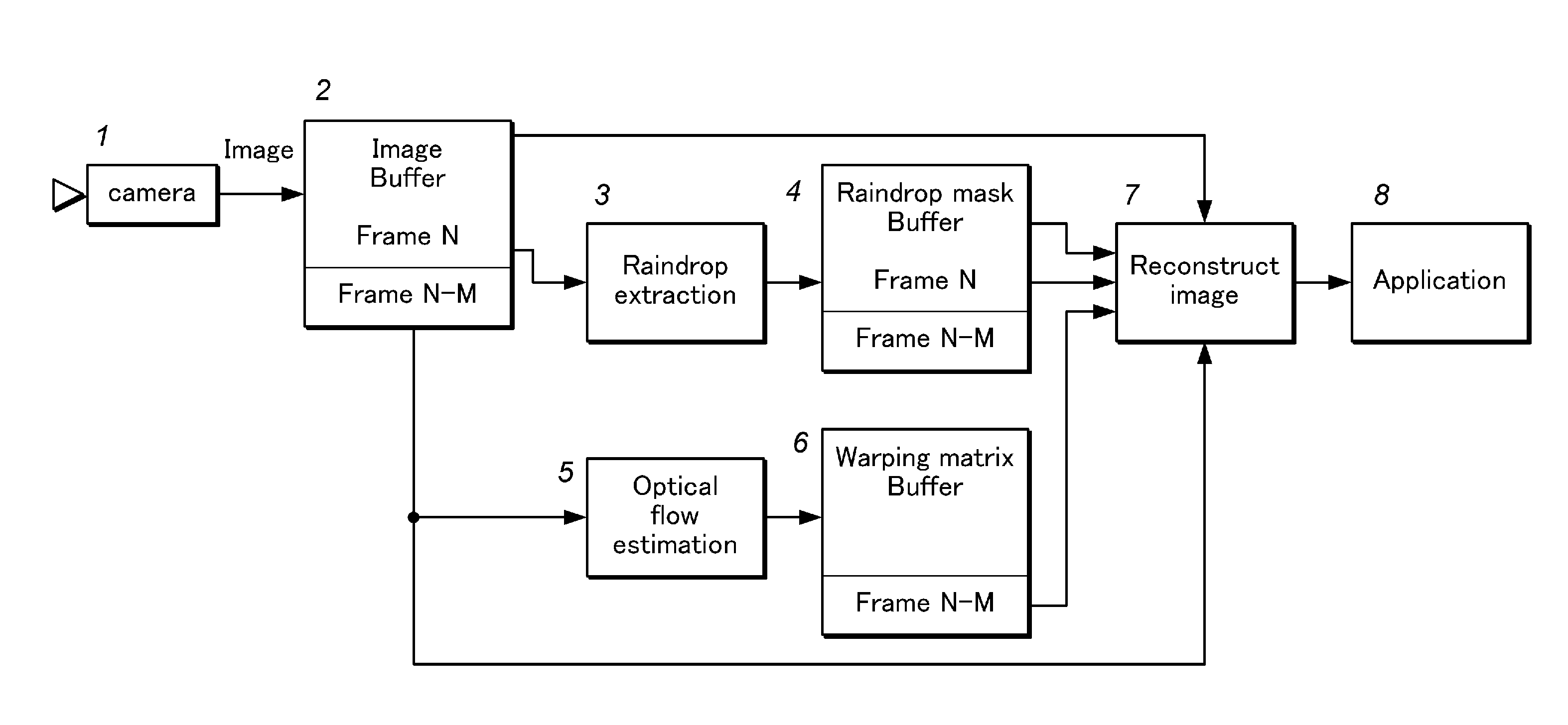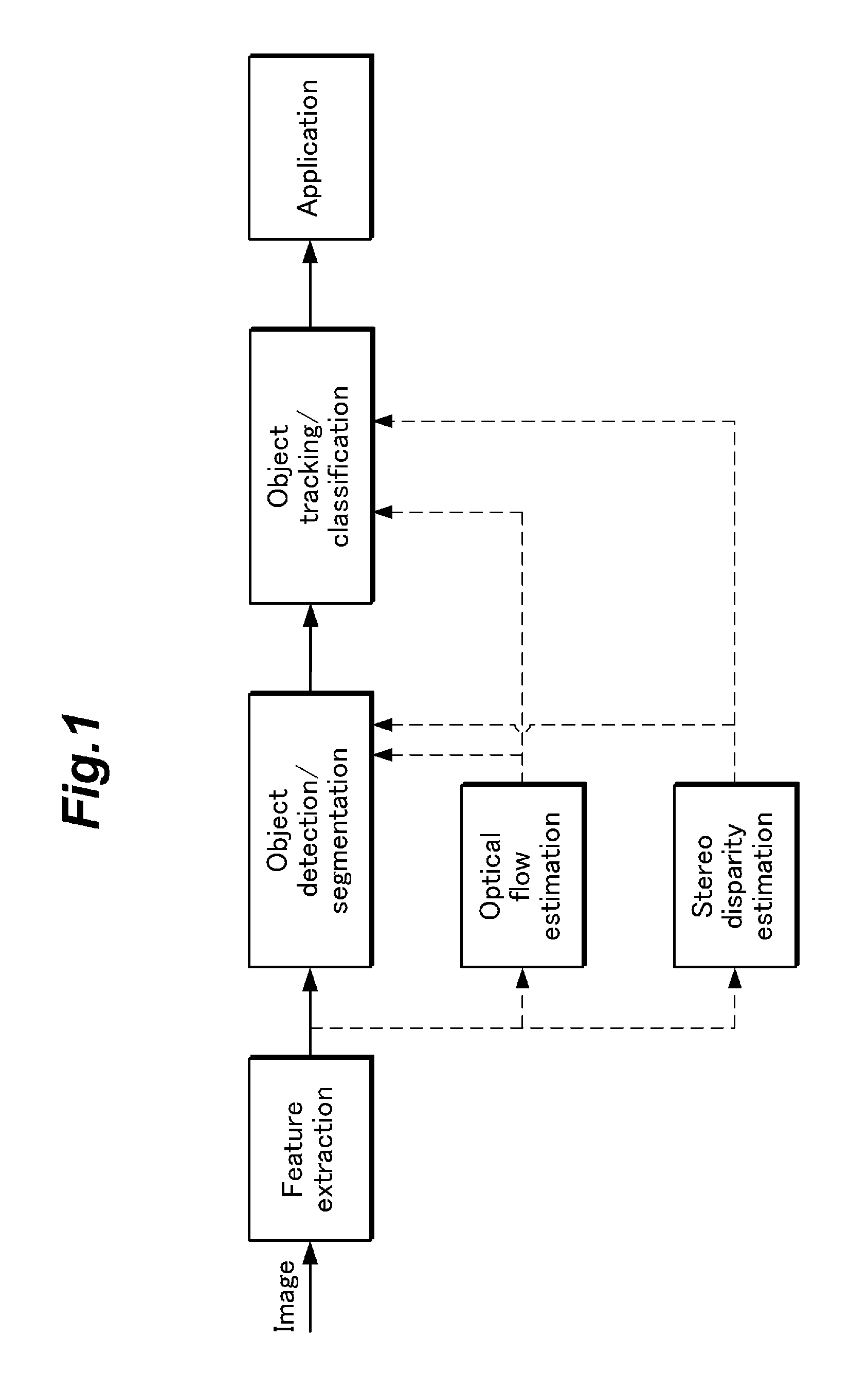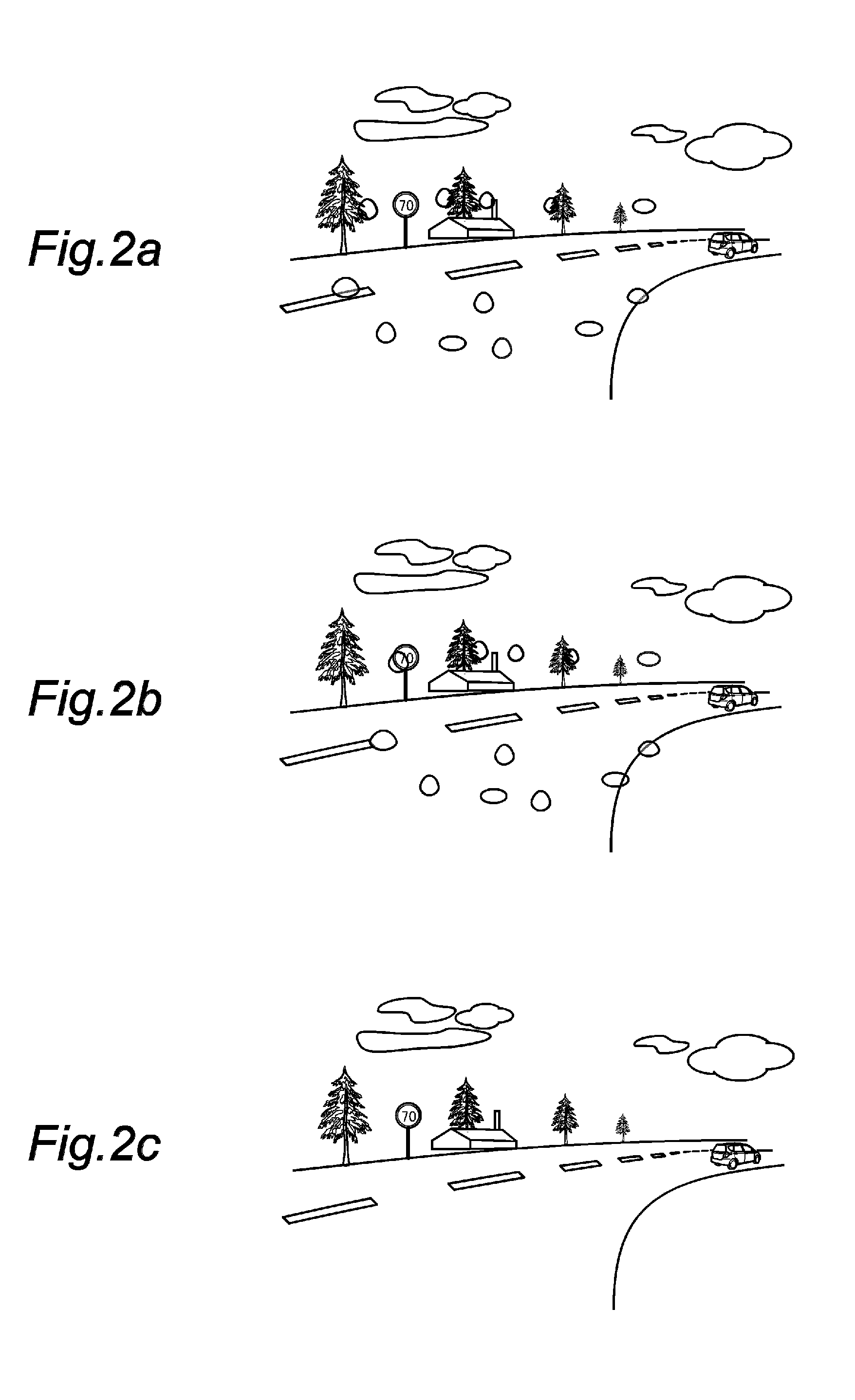Method for image restoration in a computer vision system
- Summary
- Abstract
- Description
- Claims
- Application Information
AI Technical Summary
Benefits of technology
Problems solved by technology
Method used
Image
Examples
Embodiment Construction
[0037]FIG. 1 illustrates the basic concept of the present invention. The present invention is typically employed on a vehicle to capture the image of an external view for the purposes of lane tracking, detection of obstacles, detection of traffic signs or tracking a leading vehicle for maintaining a suitable distance to it, among other possibilities.
[0038]The vehicle is equipped with a camera (which may be a stereoscopic camera) and a computer for processing the image data acquired by the camera. The image acquired by the camera is processed by a computer, and features are extracted therefrom. The features are further processed by various techniques such as object detection / segmentation and object tracking / classification. The required image handling processes are executed by suitable computer programs running on the computer. The acquired images are sometimes contaminated by optical occlusions such as raindrops, stone-chippings and dirt on the windshield. In such a case, the occlude...
PUM
 Login to View More
Login to View More Abstract
Description
Claims
Application Information
 Login to View More
Login to View More - R&D
- Intellectual Property
- Life Sciences
- Materials
- Tech Scout
- Unparalleled Data Quality
- Higher Quality Content
- 60% Fewer Hallucinations
Browse by: Latest US Patents, China's latest patents, Technical Efficacy Thesaurus, Application Domain, Technology Topic, Popular Technical Reports.
© 2025 PatSnap. All rights reserved.Legal|Privacy policy|Modern Slavery Act Transparency Statement|Sitemap|About US| Contact US: help@patsnap.com



